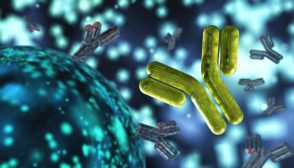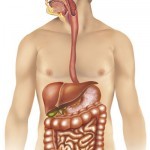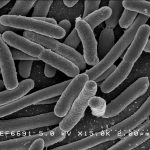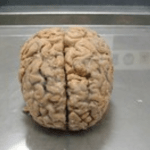
Immune response
n., ɪˈmjuːn ɹɪˈspɒns
A reaction of the body in response to the presence of a foreign substance (i.e. antigen)
Table of Contents
Immune Response Definition
An immune response is defined as the reaction of the body in response to the presence of a foreign substance (i.e. antigen).
Overview
An immune response pertains to any of the body’s response to a foreign substance, such as an antigen. (Ref. 1) The response intends to protect the body from disease-causing viruses, fungi, bacteria, and parasites. A transplanted organ may also incite an immune response when it is identified as non-self. (Ref. 2)
In vertebrates, including humans, an immune response may be in the form of antibody production, induction of cell-mediated immunity, complement activation, or development of immunological tolerance. (Ref. 3)
Antigens may be exogenous, endogenous, or autoantigens. Exogenous antigens are those that are able to gain entry inside the human body. Examples include allergens, proteins from transplanted tissues and organs, substances on the surface of foreign cells, toxins, and other foreign particles. Endogenous antigens are those that are produced from within the cell and presented on the cell surface, for instance, when the cell harbors bacteria or viruses. Endogenous antigens that are mistaken by the immune system as nonself are referred to as autoantigens.
Humoral immune response
Referred to as humoral immune response, this form of response is characterized by the formation of humoral antibodies following an antigenic challenge. (Ref.4) The immune system recognizes the antigen and elicits an immune action to destroy the cell or particle containing the recognized antigen.
B cells are the immune cells involved in the production and release of antibodies, which are also referred to as immunoglobulins. The fundamental structural unit of an immunoglobulin is a Y-shaped structure, i.e. two heavy chains and two light chains. Each of these chains consists of the variable region and the constant region. The variable region, which is the apical portion, serves as the antigen-binding site. This site is antigen-specific. This is important because the next time the immunoglobulins encounter these antigens again they will be able to recognize them and act upon them by neutralizing them.

B cells secrete immunoglobulins when they are able to recognize antigens, i.e. when they bind to specific antigens by way of their cell receptors referred to as BCRs. Thus, the first antibodies of a new B cell will be those located on the cell surface where they serve as antigen receptors. Each of these receptors is involved in intracellular signaling pathways when an antigen binds to it. (Ref.5) The binding of antigen to the B cell leads to the latter’s activation (with the aid of a helper T cell). The activated B cell will proliferate and differentiate into an antibody-secreting effector cell, i.e. a cell that secretes soluble immunoglobulins with the same antigen-binding site as that of the antigen receptor that recognized the antigen. (Ref. 5)
Cell-mediated immune response
In the cell-mediated immune response, the body responds against antigens through the immune action of various immune cells, particularly T cells, phagocytes, and natural killer (NK) cells, and cytokine-releasing cells. (Ref. 6)
T-cell mediated immunity is a form of an immune response involving the T cells. The process entails antigen presentation by an antigen-presenting cell (APC), antigenic peptide detection by the T cell, and the subsequent response of the T cell post-antigen detection. Examples of APCs are macrophages, dendritic cells, and B cells in certain circumstances. (Ref.7) They present antigenic peptides onto the Major Histocompatibility Complex (MCH) on the surface of the cell. Antigen presentation occurs when, for instance, the cell is infected by viruses or bacteria. The T-cell receptors (TCRs) on the surface of the T cell can detect specific peptide antigens that are presented by the APC. This induces the T cell to proliferate and differentiate into an effector cell. There are, in essence, three classes of effector T cells (Ref. 7): (1) CD8 T cells that differentiate into cytotoxic T cells after detecting peptide antigens on MHC class I of APCs harboring intracellular pathogens, (2) CD4 T cells that differentiate into helper T cells 1 (TH1 cells) when detecting peptide antigens on MHC class II of APCs that harbor pathogens within their vesicles, and (3) CD4 T cells that differentiate into helper T cells 2 (TH2 cells) after detecting peptide antigens on MHC class II of APCs that ingested bacteria and toxins. Helper T cells induce B cells to produce antibodies.
As for phagocytes (e.g. macrophages), these cells kill bacteria and viruses that they encounter through phagocytosis. NK cells, in turn, secrete cytotoxic granules that kill pathogens. Another form of cell-mediated immune response is cytokine release by certain cells. Cytokines (e.g. erythropoietin, interferon, interleukins, and G-CSF) are immunomodulators produced by a broad range of cells, such as lymphocytes, macrophages, mast cells, fibroblasts, endothelial cells, and stromal cells.
Recommended: BCR is the New Antibody, TCR is still a T Cell Receptor. Digital World Biology. https://digitalworldbiology.com/blog/bcr-new-antibody-tcr-still-t-cell-receptor
Immunological tolerance
Immune tolerance is important to ensure that the immune system will not overreact. Otherwise, the immune system might become overly sensitive and this could lead to disorders, such as autoimmune diseases.
Altered Immune Responses
A lack of an effective immune response may lead to disorders. One of them is autoimmunity where the body mistakes its own substances and tissues as antigens. This condition leads to autoimmune diseases, e.g. Celiac disease, systemic lupus erythematosus, and diabetes mellitus type 1. Another is gammopathy. Gammopathy is an immune disorder characterized by an abnormal proliferation of cells producing immunoglobulins. (Ref.8)
See Also
References
- antigen | Definition, Function, Types, & Facts | Britannica. (2020). In Encyclopædia Britannica. https://www.britannica.com/science/antigen
- | British Society for Immunology. (2015). Immunology.Org. https://www.immunology.org/policy-and-public-affairs/briefings-and-position-statements/transplant-immunology
- Lackie, J. (2007). The dictionary of cell and molecular biology. Amsterdam Boston: Elsevier. p.213.
- Janeway, C. A., Travers, P., Walport, M., & Shlomchik, M. J. (2016). The Humoral Immune Response. Nih.Gov; Garland Science. https://www.ncbi.nlm.nih.gov/books/NBK10752/
- Alberts, B., Johnson, A., Lewis, J., Raff, M., Roberts, K., & Walter, P. (2018). B Cells and Antibodies. Nih.Gov; Garland Science. https://www.ncbi.nlm.nih.gov/books/NBK26884/#:~:text=Each%20B%20cell%20produces%20a,an%20antibody%2Dsecreting%20effector%20cell.
- Kaiser, G. (2019). Cell-mediated immunity – an overview. In Bio.Libretexts.org. https://bio.libretexts.org/Bookshelves/Microbiology/Book%3A_Microbiology_(Kaiser)/Unit_6%3A_Adaptive_Immunity/14%3A_Cell-Mediated_Immunity/14.1%3A_Cell-Mediated_Immunity_-_An_Overview
- Janeway, C. A., Travers, P., Walport, M., & Shlomchik, M. J. (2018). T Cell-Mediated Immunity. Nih.Gov; Garland Science. https://www.ncbi.nlm.nih.gov/books/NBK10762/
- Rison, R. A., & Beydoun, S. R. (2016). Paraproteinemic neuropathy: a practical review. BMC Neurology, 16(1). https://doi.org/10.1186/s12883-016-0532-4
©BiologyOnline. Content provided and moderated by BiologyOnline Editors.










